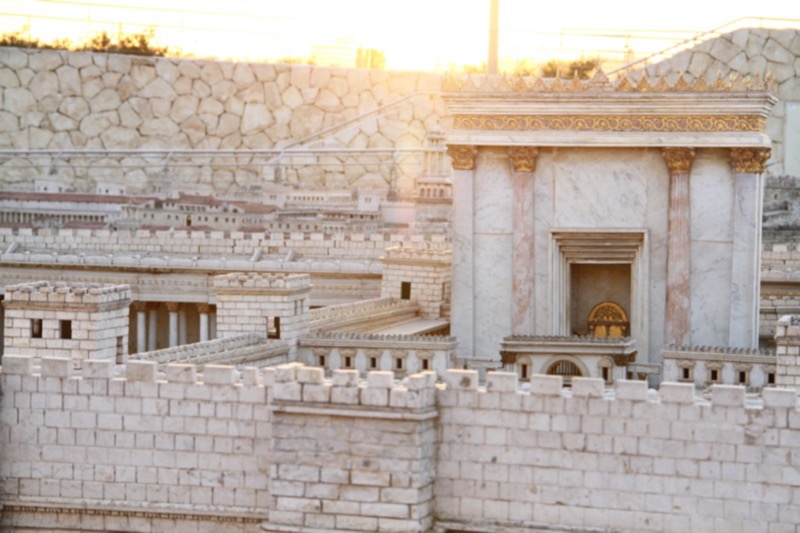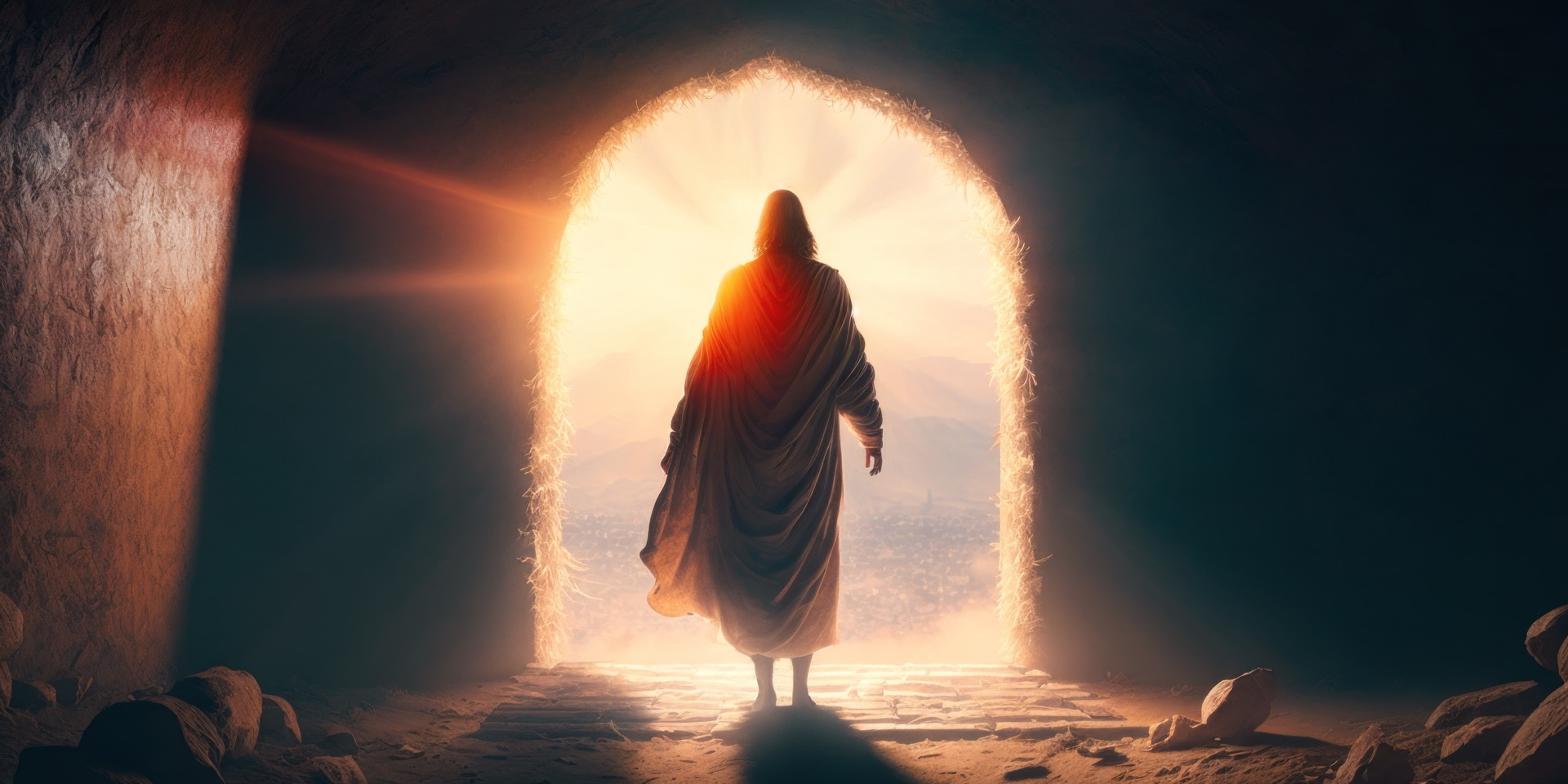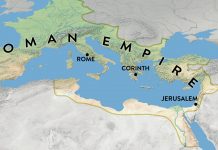Jesus Christ is certainly the most fascinating and controversial person in human history, if we look at how He has been understood throughout the history of Christian thought. But how did Jesus understand Himself?
The question that Jesus addresses to the disciples in Matthew 16:13, “Who do people say the Son of Man is?” arises from His concern for the correct theological understanding, which functions as a premise and model for people’s Christological (about Christ), soteriological (about salvation), and axiological (about truth) conceptions.
Jesus continues to challenge the apostles by asking them: “But what about you? (…) Who do you say I am?” (Matthew 16:15). The confession of faith of the apostle Peter expresses a Christological conception in accordance with Scripture: “You are the Messiah, the Son of the living God” (Matthew 16:16). This confession of faith was not the result of Peter’s wisdom—that is, of an inductive rational approach from the immanent to the transcendent. The source of this knowledge is revealed by Jesus’s answer, which is the foundation of any Christological discussion: Humans cannot know God through reason, apart from divine revelation. Peter’s public confession was the result of a revelation given by God the Father.

Therefore, a correct Christology begins with the revelation offered by God. However, Peter probably did not fully understand the revelation he received from God. Jesus was the Messiah, but what kind of Messiah? Messianic conceptions in Jewish theology were diverse. The prevailing Messianic view in Judaism envisioned a Messiah with a political profile, whose activity was to focus on the political life of the Jewish nation. The disciples were tributary to the majority view of the Messiah, and when the Saviour placed before them a suffering Messiah, this profile was incomprehensible and unacceptable to them.
For Christians today, the road to a broad understanding of New Testament Christology must begin with what Jesus believed about Himself. Careful study highlights several patterns: (a) direct statements; (b) indirect statements; and (c) contexts in which Jesus acted with God’s authority or in which He highlighted His status as a human subject to the Father. In this article, some of the beliefs expressed by Jesus about Himself will be addressed.
The Sermon on the Mount (Matthew 5-7)
In the context of the Sermon on the Mount, Jesus does not present Himself only as the new Moses, who gave Israel the Law. Through statements like “You have heard… but I tell you,” He assumes the same authority as the One who gave the Israelites the Law on Mount Sinai.
The Sermon on the Mount presents an important typological connection with the giving of the Law at Mount Sinai. A careful study of the gospels helps us understand that Jesus Himself was the lawgiver on Mount Sinai. In the prologue of the Gospel of John it is stated that “no one has ever seen God” (John 1:18). The statement does not emphasise the total transcendence of the Father in relation to creation, but rather the term “no one” refers strictly to humans. About the heavenly beings, Jesus says that the “angels in heaven always see the face of my Father” (Matthew 18:10).
The account in the book of Exodus that tells us that Moses saw God from behind (Exodus 33:23) seems, therefore, to contradict the passage in the prologue. But the two passages can be harmonised if we consider the hypothesis that the person Moses saw on Mount Sinai was the Lord Jesus Christ. If this is true, Jesus confirms that He is the lawgiver God whom Moses saw on Mount Sinai.
Greater than the Temple and Lord of the Sabbath (Matthew 12:6, 8)
In the episode where the disciples gather ears of wheat on the Sabbath, Jesus mentions the work of the priests in the Temple, which, although done on the Sabbath, is not imputed to the priests as breaking the Sabbath. In this context, Jesus makes a surprising statement, declaring Himself greater than the Temple. The use of the neuter gender in the Greek for “greater” suggests that Jesus was also talking about the work of the Kingdom and His messianic ministry, not just about His person.

His intention was to create a much broader comparison, so that His listeners would understand that the Temple is not an end in itself, but a pedagogical means by which people can understand the plan of salvation. If the service at the Temple was more important than the Sabbath (the service of the priests on the Sabbath in the Temple was not considered breaking the Sabbath), then Jesus and His work have authority over the Sabbath, because He is greater than the Temple[1]. In the same context, Jesus also affirms that He is Lord of the Sabbath (Matthew 12:8; Mark 2:27, 28), highlighting the authority He has to interpret God’s command in the deepest sense.
Jesus is the authority that defines the Sabbath and determines what is appropriate or inappropriate as an activity on the Sabbath day. Jesus presents Himself as having the full authority to interpret the Torah, a fact also highlighted in the context of the Sermon on the Mount. Returning to the positioning of Jesus in relation to the Temple, this is shocking for the Jews. The temple was more than a place of worship for them—it was a symbol of the nation. In the context of Roman oppression, priestly service was among the few aspects in which Israel had the right to self-determination. Diminishing the significance of the Temple meant for them an unforgivable betrayal, and this accusation was used by the Jewish leaders during Jesus’s trial[2]. The episode conveys that Jesus understood and assumed His status and authority in relation to the Law at Sinai and the Temple in Jerusalem.
Son and Lord of David (Matthew 22:41-46)
In the discussion with the Pharisees about the nature of the relationship between Christ and David presented by Psalm 110, three crucial elements stand out: (a) the speaker of Psalm 110 is David; (b) David speaks of the Messiah; and (c) someone identified as “My Lord” is superior to the speaker[3]. Using antinomy[4], Jesus tries to clarify for the Jews the double role that the Messiah has in relation to David—that of Son and Lord. Jesus does not dispute the fact that the Messiah (Christ, in Greek) is the Son of David, but He makes it clear that the Messiah is more than the Son of Man. His quality as “Lord of David” is attested by the Old Testament passage quoted by Jesus, where the Messiah, although a descendant of David, transcends the human.
Not even the Son knows about that day (Matthew 24:36)
Jesus’s statement about not knowing the day and hour of His return is one of the most controversial in the Holy Scripture. The statement has serious consequences regarding the understanding of the two natures of Christ (divine and human) and the way they interact. Although Jesus speaks of certain future events, which shows prophetic knowledge, He states that He does not possess complete eschatological knowledge. How can this episode be understood in light of His divine nature? If He is also God, why is He not omniscient?
It is not surprising that several copyists omitted this clarification regarding the ignorance of the Son, which they considered incompatible with the Christology of the early Church. However, Matthew’s Christology should be viewed through the lens of the kenosis described in Philippians 2:6-8—that is, through the lens of two simultaneous processes that took place in the case of Jesus: His renunciation of the authority of God (He did not consider equality with God something to be used to His own advantage), while retaining His divine nature (being in very nature God), and accepting a slave status by assuming human nature. The act of kenosis is not so much the emptying of a certain potential, but Jesus’s self-limitation.
Christ remains God in nature, but not in authority, and becomes both human by nature and slave in status.
This way, Jesus’s statement that He does not know the time of His own return can be elucidated. The assumption of human nature and the status of slave entails the renunciation of Jesus’s authority as God[5].
He has granted the Son also to have life in Himself (John 5:26)
The healing of the paralytic at Bethesda on the Sabbath created tension in the circle of Jewish leaders. Speaking about the fact that His Father works continuously—meaning that He permanently sustains creation—Jesus emphasises that the Father granted the Son to have life in Himself. Over the centuries, this idea has been one of the most controversial topics regarding the nature of Christ.

Jesus’s statement generates several questions: (a) Does only the Father have life in Himself? (b) If the Son does not have life in Himself, can He be considered God? (c) When did the Father give the Son life in Himself? (d) What does the term “life” mean in this context? The passage echoes the passage in John 1:3-4, which presents the same controversial issue. If the Son, the Logos who was God and through whom all things were created, received life in Himself from the Father, does it mean that He is but a demiurge?[6]
One must analyse whether the author was referring to the stage of the non-incarnated Logos (asarkos logos) or to that of the incarnate Logos (ensarkos logos). If the first stage is considered, then we are talking about a process of becoming before the incarnation. In this case, the life of the Logos is derived, its ability to give life being an acquired quality, rather than an intrinsic one. But what meaning did the term ‘life’ have for John, the author—that of existence, or that of spiritual life? If the author is referring to existence, then dilemmas arise regarding the Son’s quality of God. If the author was thinking about the spiritual life, then this can be explained in the sense that the incarnate Logos had the role of offering spiritual life to people.
On the other hand, if the author had in mind the stage of incarnation, then this statement can be better understood also through the lens of the kenosis of the Logos. Jesus’s self-emptying of His authority as God required His total dependence on God the Father, so that His life and the power to give life would be offered to the Son by God the Father. Since the kenosis entailed the complete renunciation of God’s authority, everything Jesus accomplished during His incarnation was done through the power received from the Father.
Conclusion
Jesus’s statements about Himself provide clear evidence of His awareness of His divine nature and messianic role. His discourse and activity in Jewish society, as reported in the four gospels, are sufficient to outline the profile of Jesus as a divine-human being.
The controversial statements about Himself, whereby He places Himself in a lower position than the Father, must be interpreted through the lens of the kenosis described in Philippians 2:6-8. The passage from Philippians is a significant hymn in the Pauline Christological discourse. The apostle presents Christ as God both in nature and in authority, but a Christ who, by assuming human nature, renounces the authority of God (keeping His divine nature) and assumes His human nature and the status of a slave. The kenotic act entails precisely this exchange of authority.
Jesus is fully God and fully human from the perspective of nature, but He assumes total dependence on the Father, considering Himself less than the Father. He is fully aware of His dual nature and the eternal consequences of assuming human nature.
Marius Mitrache believes that a correct conception of Jesus Christ entails the understanding of the biblical language from the perspective of the two stages of the Logos: the one before the incarnation and the one after the incarnation.




















